Gold Is Where You Find It

Brief Synopsis
Cast & Crew
Michael Curtiz
George Brent
Olivia De Havilland
Claude Rains
Margaret Lindsay
John Litel
Film Details
Technical Specs

Synopsis
Colonel Ferris, a wealthy farmer in northern California, is strongly opposed to hydraulic mining, a new method developed during the gold rush of the 1870's, which is flooding the area's prosperous farmlands. Despite Ferris' political stance, Jared Whitney, a mining engineer from the East, becomes friends with the colonel's son Lance and falls in love with his daughter Serena. Family tensions deepen when the colonel's brother Ralph gives up farming to go to San Francisco to work for his wife Rosanna's father, Harrison McCooey, a leader in the mining venture. When Lance follows Ralph, the colonel, focusing his anger on Jared, forbids him to see Serena. Jared is called to San Francisco by McCooey, and although Jared is opposed to a plan to build a new dam to increase water power, he stands behind the company. When Serena learns that her father has been confiscating Jared's letters, she too goes to San Francisco, where Rosanna throws a lavish party, during which it announced that the farmers are taking legal action against the miners. Now Serena and Jared find themselves on opposite sides. The courts support the farmers, but McCooey's gang use mine foreman Slug Minton to keep the mines in operation. In a desperate attempt to stop the pumps, Lance is killed, and Jared finally understands McCooey's greedy nature. Ready to fight, the colonel leads a group of farmers to battle at the mine site, but it is Jared who wins the victory by blowing up the controversial dam. The court upholds its decision in favor of the farmers, and Jared and Serena are reconciled.

Director

Michael Curtiz
Cast
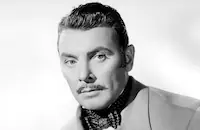
George Brent

Olivia De Havilland

Claude Rains

Margaret Lindsay

John Litel
Marcia Ralston
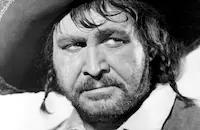
Barton Maclane
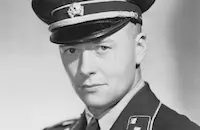
Tim Holt

Sidney Toler

Henry O'neill

Willie Best

Robert Mcwade

George Hayes
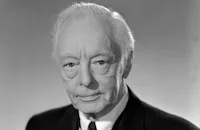
Harry Davenport

Clarence Kolb

Moroni Olsen
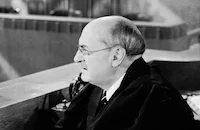
Granville Bates
Robert Homans
Eddy Chandler
Russell Simpson

Charles Halton
Erville Alderson

Cy Kendall
Richard Botiller
Cliff Saum
Al Herman

Jack Mower
Arthur Aylesworth
Raymond Brown
Guy Wilkerson
Jack Rutherford
Frank Pharr
Chester Gan
Karl Hackett

Wilfred Lucas
Thomas R. Mills
John Harron
Daisy Lee
Eric Wilton
Sarah Edwards
Milton Kibbee
Sue Moore
Walter Rogers
Douglas Wood
Alan Davis
Spec O'donnell
Clifford Soubier
James Farley
Edmund Cobb Nowell Keane
Crew
Milo Anderson
Sam Bischoff
E. A. Brown
Robert Buckner
Allen M. Davey
Warren Duff
Leo F. Forbstein
William Wister Haines
Byron Haskins
Michel Jacoby
Natalie Kalmus
Clarence Kolster
Owen Marks
Harold Noyes
Herbert Plews
Sol Polito
Irving Rapper
Bert Six
Ted Smith
Tillie Starret
Max Steiner
Jack Sullivan
Jack L. Warner
Perc Westmore

Videos
Movie Clip



Trailer
Film Details
Technical Specs

Articles
Gold is Where You Find It
Warner Brothers' second movie to be shot in the new, more lifelike process of three-strip Technicolor, Gold Is Where You Find It tells the true story of the battle between gold miners and farmers in Northern California during the 1870's. George Brent stars as a mining engineer who falls in love with a farmer's daughter (Olivia de Havilland). Claude Rains is her father who disapproves of miners and forbids Brent from courting her.
The romantic story, however, is quite secondary to the true and very realistically presented story of the ravages caused by the gold mining industry of that time. The original gold rush of the late 1840's was long over and the lone prospector with his pan had been replaced by high-pressure water hoses, called "monitors," that ripped the sides off mountains to uncover the ore. Sluices pulled the gold out of the water. The silt and dirt loosened from the mountains ran off into local rivers and streams.
The devastation from all that runoff caused an ecological catastrophe that has left the region damaged to this day. The amount of dirt that flowed downstream over a twenty-year period was the equivalent of several times the amount moved to create the Panama Canal. Farmlands were flooded, rivers were made unnavigable and all the trout and salmon in the streams of the Sierra Mountains were killed. The farmers whose land had been ruined fought back with state and federal lawsuits.
Oddly enough, Gold Is Where You Find It and the story on which it is based were connected to someone whose fortune originated in mines. Newspaper publisher William Randolph Hearst ran the magazine, The Cosmopolitan, which first published the Clements Ripley story and his movie company, Cosmopolitan Productions, co-produced the movie with Warner Brothers through their First National Pictures division. Hearst's wealth came from his father's mining interests; mines that were not the ones depicted in the movie. Nevertheless, Hearst's father, Senator George Hearst, is introduced as a character in the film. "Willie wants to be a journalist," Senator Hearst announces during his brief appearance.
When Gold Is Where You Find It was released, Hearst was a very controversial figure and Senator Hearst's announcement about his son was greeted with boos in some theaters. The movie, with its hero farmers, may have been an attempt by Hearst to alleviate his image after The Farmer Labor Progressive Federation declared him to be "Labor's Enemy No. 1" in 1936. A sly dig at another Hearst enemy comes in one of the character names. Barton MacLane's villain is listed as "Slag Martin" in the credits, but is addressed as "Minton" in the film. Minton was, by coincidence, the name of a Senator who denounced Hearst on the floor of Congress in 1936.
Gold Is Where You Find It was already set to become an expensive film since it was shot with the pricey new Technicolor stock. Costs were driven up further when rains drenched the location shooting in the Weaverville, California area. Nevertheless, the movie ultimately made a profit of $240,000 and director Michael Curtiz's felicity with the Technicolor camera led Warner Brothers to put him in the director's chair in place of William Keighley for their next Technicolor extravaganza, The Adventures of Robin Hood (1938). Although that film remains the more famous of the two, Gold Is Where You Find It is a beautiful and sometimes exciting early color movie that presents a more accurate portrait of historical events.
Director: Michael Curtiz
Screenplay: Warren Duff, Robert Buckner based on the story by Clements Ripley
Cinematography: Sol Polito
Music: Max Steiner
Editing: Clarence Kolster
Art Direction: Ted Smith
Cast: George Brent (Jared Whitney), Olivia de Havilland (Serena Ferris), Claude Rains (Colonel Christopher Ferris), Barton MacLane (Foreman Slag Minton), Tim Holt (Lanceford Ferris), Sidney Toler (Harrison McCooey).
C-95m.
by Brian Cady

Gold is Where You Find It
Quotes
Trivia
Notes
Clement Ripley's novel was serialized in Hearst's International-Cosmopolitan (Mar-June 1936). According to Warner Bros. records, producer Robert Lord turned down the picture because of a heavy schedule, and Howard Hawks was considered as director. Correspondence from Byron "Bud" Haskins suggests that some of the miniature work for the dam explosion was used for both this film and Warner Bros.' 1938 film Valley of the Giants. The film was shot partially on location in Weaverville, CA.















